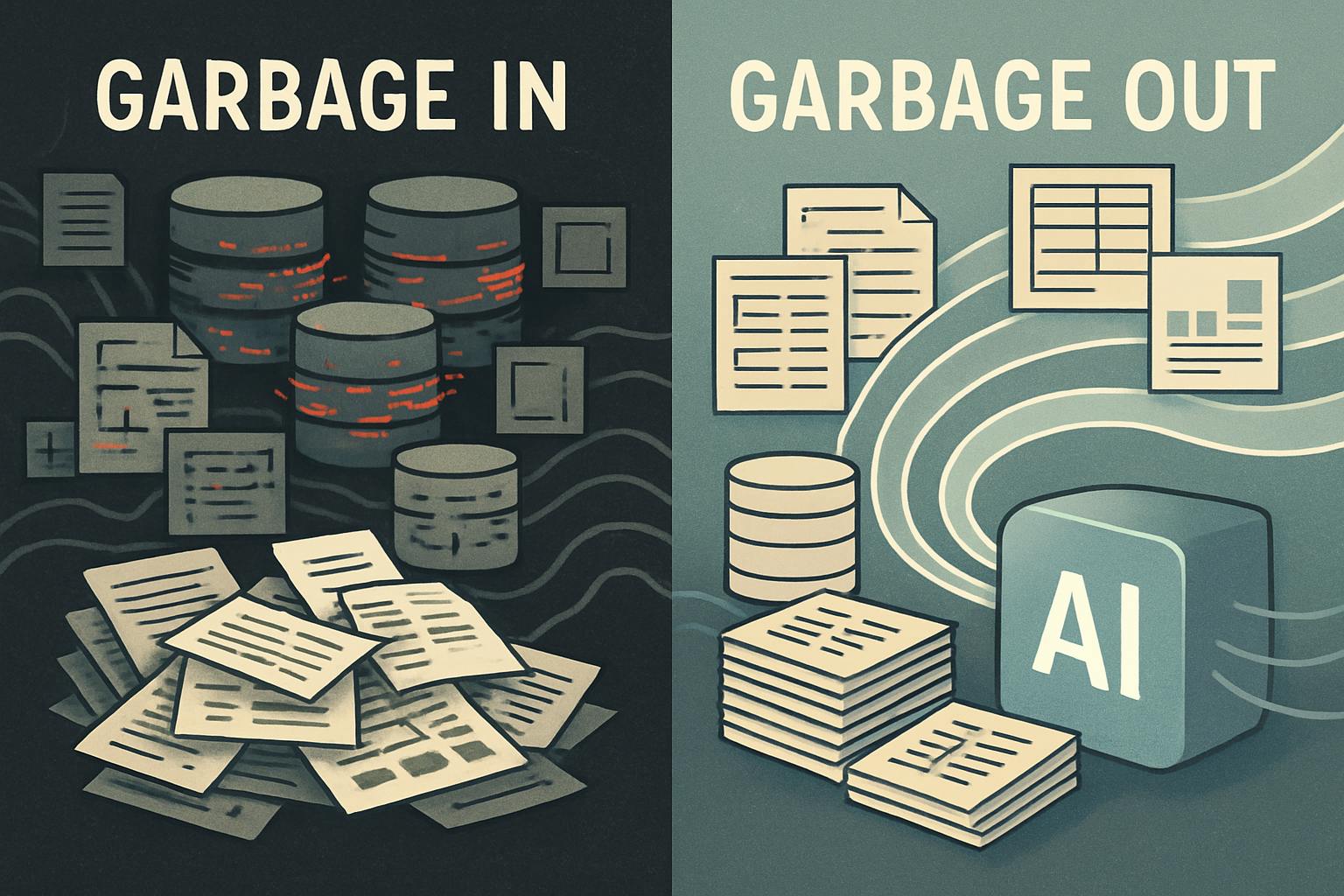Table of contents :
Enterprise AI for Beginners: 7 Critical Errors You Can't Afford to Make
Artificial intelligence is no longer a science fiction concept, but a powerful lever for growth and innovation for businesses of all sizes. However, initial enthusiasm can quickly turn to disappointment if the project is poorly prepared. To start with AI in business on solid foundations, it's crucial to anticipate the most common pitfalls. Experience shows that many initiatives fail not because of the technology itself, but because of strategic and operational errors.
This article reveals the 7 fatal mistakes that can compromise your transformation and, most importantly, how to avoid them to make AI a true ally for your performance.
Mistake 1: Launching Without a Clear Strategy (The Shiny Object Syndrome)
The Mistake: Buying or developing an AI tool because "everyone is doing it," without having first defined a precise business objective. This is the most frequent error: wanting AI before knowing why.
Why It's Fatal: Without an objective, it's impossible to measure success or return on investment (ROI). Resources (time, money, personnel) are wasted on a project without direction, which ends up being abandoned, creating lasting distrust toward innovation.
The Solution:
- Identify a business problem: Start with a real "pain point." Is it about optimizing customer service, automating repetitive tasks, or improving predictive maintenance?
- Define specific use cases: List the processes that AI could improve.
- Set performance indicators (KPIs): How will you know that AI is working? (e.g., 20% reduction in request processing time, 15% increase in customer satisfaction).
Mistake 2: Underestimating the Importance of Data Quality
The Mistake: Thinking that AI can work miracles with poor quality, incomplete, or unstructured data.
Why It's Fatal: AI feeds on data. It's its fuel. If you give it erroneous or biased data ("Garbage In, Garbage Out"), the results will be at best useless, at worst dangerous for your business (incorrect decisions, false predictions).
The Solution:
- Audit your data: Evaluate the quality, quantity, and relevance of your current data.
- Implement data governance: Define processes to collect, clean, and store data consistently.
- Start small: A first AI project can actually serve to structure and qualify an initial dataset.

Mistake 3: Neglecting the Human Aspect and Change Management
The Mistake: Imposing an AI tool without involving, training, or reassuring the teams who will have to use it daily.
Why It's Fatal: Fear of the unknown, fear of being replaced, or simple resistance to change can kill the best technological project. An unadopted tool is a useless tool.
The Solution:
- Communicate transparently: Explain the "why" of the project and how AI will enhance employees' skills, not replace them.
- Involve future users: Include them from the needs definition phase. Their feedback is valuable.
- Plan AI training for teams: Budget and schedule training for everyone on using the new tool and new processes.
Mistake 4: Choosing Technology Before the Problem
The Mistake: Being seduced by a cutting-edge AI tool and trying to find a problem it could solve in your company.
Why It's Fatal: This ensures developing a solution for a problem that doesn't exist, or whose resolution isn't a priority. You're investing in a high-tech hammer when you needed a screwdriver.
The Solution:
- Problem first: The approach should always be: Problem → Objective → Potential AI Solution.
- Evaluate multiple options: Once the problem is defined, explore different AI tools or approaches. The most complex isn't always the best.
- Think "solution" not "technology": The goal is to solve a business challenge, not to check the "we have AI" box.

Mistake 5: Expecting Immediate Return on Investment
The Mistake: Thinking that AI implementation will generate massive gains from the first month.
Why It's Fatal: AI is a medium and long-term investment. Expecting instant ROI leads to frustration and premature project termination by disappointed decision-makers.
The Solution:
- Define a realistic roadmap: Plan test phases (Proof of Concept), pilot deployment, then generalization.
- Measure "quick wins": Identify rapid gains, even modest ones (time savings, indicator improvement), to maintain motivation and justify continued investment.
- Consider ROI holistically: Return on investment isn't just financial. It can be better customer satisfaction, reduced team stress, or a more innovative brand image.
Mistake 6: Ignoring Security and Ethics Issues
The Mistake: Focusing solely on AI performance without worrying about the security of data used and potential algorithm biases.
Why It's Fatal: A sensitive data leak or discriminatory decision made by AI can have disastrous legal, financial, and reputational consequences. The trust of your customers and partners is at stake.
The Solution:
- Integrate security from design ("Security by Design"): Ensure GDPR compliance and data protection protocols.
- Monitor biases: Implement mechanisms to detect and correct potential biases in algorithms, especially on sensitive topics.
- Maintain human supervision: For critical decisions, AI should remain a decision-support tool, validated by a human.
Mistake 7: Wanting to Do Everything In-House Without Expertise
The Mistake: Thinking you can lead a complex AI project for SMEs or large groups by relying solely on existing internal skills, if they're not adapted.
Why It's Fatal: AI development and deployment require specific skills (Data Science, Machine Learning Engineering, etc.). Trying to do without them leads to projects that never succeed or are technically deficient.
The Solution:
- Evaluate your internal skills: Make an honest assessment of available expertise.
- Don't be afraid to get help: Collaborate with consultants, freelancers, or specialized agencies to start. It's an investment that accelerates the project and guarantees its quality.
- Focus on continuous training: Use this first project to upskill your internal teams through knowledge transfer.
AI: a Strategic Marathon, Not a Technological Sprint
Starting with AI in business is an exciting adventure full of opportunities. Success doesn't lie in mastering the most complex technology, but in a methodical approach, centered on your business challenges and your teams.
By avoiding these 7 mistakes, you transform a risky bet into a controlled strategic approach. Start small, think human, measure your progress, and build a data culture step by step. This is how artificial intelligence will become a sustainable pillar of your growth.
author
OSNI

Published
July 03, 2025